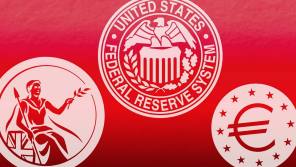

Attitudes towards investing in Europe have improved markedly since the end of last year, as demonstrated by inflows into Europe ex-UK funds. In the third quarter of this year the sector attracted net retail inflows of £1.3bn, compared with outflows of £1.2bn in the same quarter last year, according to Investment Association figures.
One of the key factors providing support for European equities is improving economic performance. The euro area economy is likely to grow at its fastest rate for a decade this year, with real GDP growth of 2.2 per cent, according to the European Commission’s autumn forecast. This is markedly higher than the commission was predicting as recently as spring.
The commission said this better-than-expected progress has been driven by strengthening global growth, resilient consumer consumption and improving economic sentiment.
It said unemployment in the eurozone is likely to fall to its lowest level since 2009 this year – at a forecast 9.1 per cent – and the number of people in work is likely to hit a record high. Meanwhile, core inflation, which excludes energy costs, remains subdued and is expected to average 1.5 per cent this year and 1.4 per cent next year.
If we take a closer look at the individual economies in the region, the southern nations are continuing to pick up after a long period of recession.
Italy’s GDP grew 0.5 per cent in the third quarter, up 1.8 per cent year on year, which was slightly ahead of consensus forecasts. While unemployment is still high it is declining and, as confidence returns, consumers are playing catch-up with their spending after years of restraint, with new car registrations in Italy up 7.1 per cent in October.
The recovery in the Spanish economy also appears to be continuing, despite uncertainty prompted by the Catalonian independence vote. There is also encouraging news at individual company level.
During the years when southern European economies were languishing in the doldrums, many in the north continued to power ahead and they are generally continuing to perform reasonably well.
Norway and Sweden have experienced a cooling of their housing markets and the former has also been affected by reduced North Sea oil and gas activity, but Sweden’s economy has continued to grow at a respectable 2.6 per cent this year.
Key points
- Improving economic performance is making Europe a better place to invest in.
- Germany is forecast to grow by 2.2 per cent.
- Labour markets are tight in many sectors.
Germany, Europe’s powerhouse, is forecast to grow by 2.2 per cent in 2017, driven by a continuation of the favourable trends of the past few years.
Turning to company performance, corporates in Europe have generally reported strong earnings growth this year, although there were some disappointments in the third quarter. These increased profits, combined with improving sentiment, will have played their part in pushing up valuations on European equities.
Recent research from JPMorgan calculated the one-year-forward price/earnings (P/E) multiple of European large-cap equities as 18.6 times and small and mid-caps as 17.7 times. While this is at the top end of the historic range, these higher valuations are a consequence of the improving performance of European companies and they are certainly not expensive relative to most other markets, the US in particular.
As tends to be the case, analysts’ estimates appear slightly over optimistic on achievable margins in the short term. This, coupled with elevated valuations, can result in more pronounced downward share price movement when earnings disappoint.
In terms of reasons for investor caution, top of the list is Brexit. Given the many and conflicting political agendas in play, there is the potential for an own goal in the form of a deal that is bad not only for the UK, but also its trading partners in the European Union.
Brexit is not the only political risk. Recent developments in Spain and Germany illustrate increased political uncertainty and highlight that members of the EU have pressing concerns beyond their relationship with the UK. However, the policy choices open to politicians of all parties are limited given the importance most voters place on the financial security of their country and themselves, the significant reduction of the government budget deficit by the left-wing Portuguese socialists being a case in point.
Away from the political arena, rising costs are another consideration. While oil prices remain low, companies are paying more for materials such as chemicals and steel and a shortage of electronic and memory components is also pushing up prices.
Labour markets too are tight in many sectors in various countries, leading to wage pressure, for example, in the IT services sector in France.
It can be argued, though, that these are growing pains and very different to, for example, company earnings falling because of weaker demand. Well managed companies can withstand these cost pressures and pass them on to customers over the longer term.
Overall, there are a series of positive factors supporting European equities. Economic data from the eurozone is positive, company earnings have improved and the region’s companies are benefiting from stronger global growth.
Real GDP per capita in the EU only returned to its 2007 level in late 2015, after nearly a decade of flatlining or falling back. This suggests little risk of overheating and instead indicates the region’s economies have plenty of scope to expand to make up for ground lost after the 2008 crisis. In that context, there are good reasons for cautious optimism on European equities.
David Walton is manager of the Marlborough European Multi-Cap Fund



